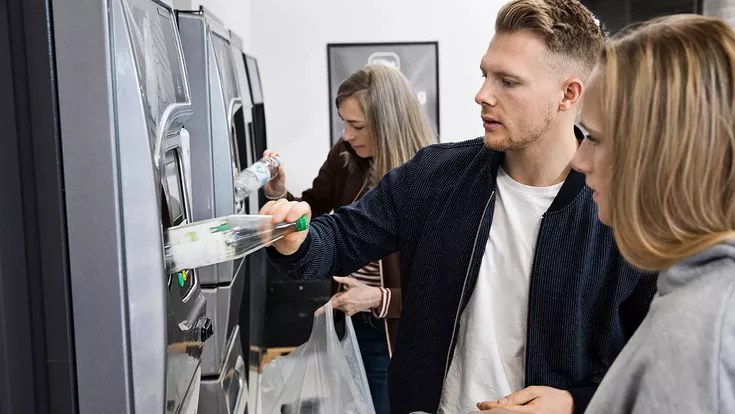Deposit Return System : Denmarks DRS for cans and bottles achieves 100 per cent circularity

1.9 billion bottles and cans were returned through the Danish Return System in 2021, an increase of 15% compared to last year, when 1.7 billion were returned. This continues the massive increase that has occurred since the Corona closing, when many changed their deposit and drinking habits.
At the same time, the return rate has risen from 92% to 93%, the highest in the world. The return rate shows how many of the bottles and cans sold with deposit labels are returned to the deposit system. The only country that can match a 93 % return rate is Finland, but the Finns have significantly fewer products with deposits, so Denmark can call itself world champion.
Record over record
We are proud that the return rate has increased in a year when we also set a new volume record. The fact that we can achieve a new record with a record on it is first and foremost due to the willingness and motivation of Danes to have their deposits returned so that they can be optimally recycled into new bottles and cans. But it also shows how deeply environmental responsibility is rooted in each individual in the value chain: from beverage producers to grocery retailers to the reprocessors who recycle the materials," says Lars Krejberg Petersen, CEO of Dansk Retursystem.
The increase in volumes is partly due to the fact that Danes changed their deposit and drinking habits in 2021 due to the Corona closure. For example, border trade and restaurant visits have been closed, which has shifted consumption home to Denmark and home in private - and this has resulted in more with a deposit being bought and returned.
The percentage of bottles and cans that are recycled in a closed loop has increased from 90% to 94% by 2021, partly because it has become possible to recycle some of the coloured plastic in a bottle-to-bottle loop.
Bottle-to-bottle cycle
Dansk Retursystem collects all the bottles and cans with deposits that are handed in every day at bottle vending machines and deposit stations or are consumed in restaurants and offices. The materials are sorted and sent for recycling to become new bottles and cans.
The percentage of bottles and cans that are recycled in a closed loop has increased from 90% to 94% by 2021, partly because it has become possible to recycle some of the coloured plastic in a bottle-to-bottle loop. In addition, more cans have been returned, and for these alone the recycling rate is almost 100%. The remaining bottles and cans collected are recycled into other food packaging.
100% circular economy
The Danish deposit system is one of the most efficient in the world, and this is shown by the fact that the fee that producers and importers pay to have their bottles or cans handled in the deposit system has fallen dramatically in recent years. In fact, the fee for aluminium cans is 0 cents, making aluminium cans the first packaging category to be 100% circular economically. In addition to efficiencies, this is due to an increasing demand for recyclable materials in the high food quality that comes from the Danish Return System.
"We still have a goal that both cans and bottles in the deposit system should be 100% circular economic, and by having achieved that for cans, we are well on our way. Many food manufacturers are turning their attention to the market for recyclable material these years, and that makes the materials from our deposit system very attractive. At the same time, it shows that environment and economy are not necessarily opposites, but can go hand in hand in a circular economic business", says Lars Krejberg Petersen.
